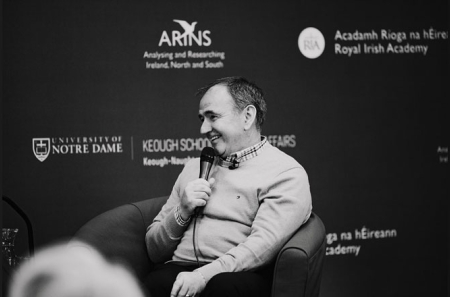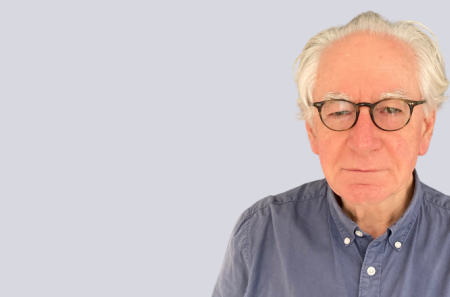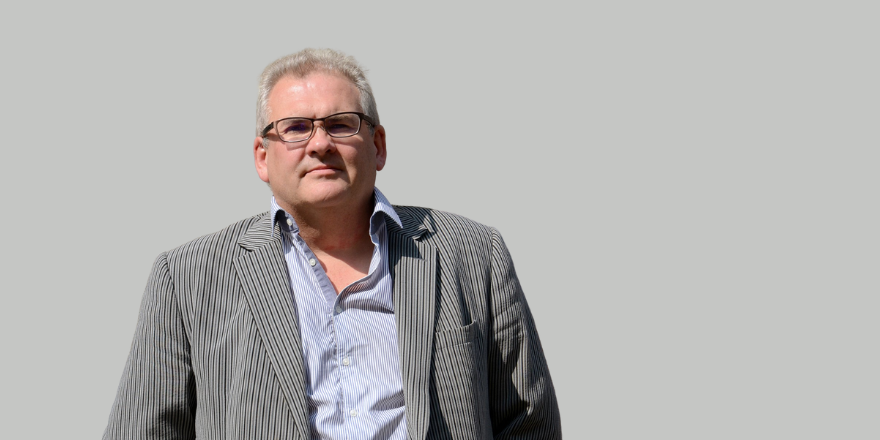
New Time: New Thinking
03 August 2023In the latest ARINS blog post, Peter Shirlow discusses the results of the recent Institute of Irish Studies, Liverpool polls.
In an early ARINS paper on Unionism, Jennifer Todd puzzles as to whether unionism is polity or people centred, and that the community may be perceived as ‘potentially fissile, intermittently ontologically insecure, and quick to favour repressive policies’ while those who align their sense of identity, with their past and belonging are a people who, ‘notoriously, cannot be reassured by reasoned argument, pragmatic appeals or appeasement.’ I find such language confusing given that I sense and know that the pro-union community is not as collectively bound as may be assumed. As the recent Institute of Irish Studies, Liverpool polls have shown the use of short-hand caricature or stereotyping of communities is limiting.
Our polls find that respondents who are pro-union are ‘notoriously’ more varied by religion and identity when compared to respondents who favour Irish unity. The latter are more firmly rooted and designate as Irish or Catholic. While the former includes a significant share of Catholics, migrants and the bulk of those who do not state a faith. Moreover, the majority of the pro-union electorate do not vote DUP, UUP or TUV, and are not incentivised to vote to keep ‘the other side out’. Of course, their majority support for marriage equality and access to abortion services is a favouring of ‘repressive policies’ as would be understood by religious zealots. (See Figure one)
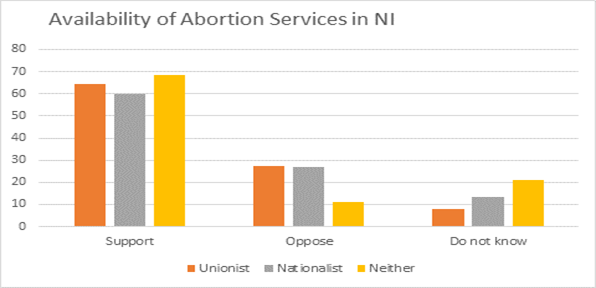
Figure 1: Responses relating to the availability of Abortion Services in Northern Ireland
Negative readings of findings/results undermine the capacity to shift pro-union thinking towards forms of Irish nationalism that engender a perception of being ‘othered’ and plainly misunderstood.
Other myths of socio-economic decline are challenged by the fact that the majority of socially deprived wards in Northern Ireland are Catholic due to a combination of past discrimination, the rise of Belfast and its new economies unlike Derry which has not received the same post-conflict benefits, and a lack of policy imagination within the Assembly especially regarding alternative economic strategies. Far from being disorganised with regard to social capital one of the most successful social economy projects is run by loyalists in Lisburn. The sectarian label is challenged by pro-union supporters who are less likely to be concerned by a relative marrying across the identity divide and more likely to be supportive of integrated education. This is not an insecure community but one that is more secular and increasingly socially liberal and in many ways the epitome of what the GFA aimed for – a plurality of thinking and post-conflict integration. “Othering” and the label of “other” leads to the folly of labelling ‘self’ through narrow definitions of identity wrapped in information short cuts and far from empirically-led hubris. Few in Northern Ireland rise from their beds and peer out the window to check their constitutional status.
As our recent report shows, through analysis of census data there are issues and trends rarely identified in public discourse. These include a) the significant slowdown in the birth rate and no overall majority among those aged under 18 who are Catholic, Protestant or neither b) the near four-fold increase in those who do not state their religion since 2001; a trend which is even more pronounced among the school age population c) the majority of those who do not state their religion are mostly British only or Northern Irish only d) over 30% of Catholics did not state they are Irish only. The goal of sectarian head counting, achieving 50+1, has been undermined by the growth in those not stating a religion and electorally, by the rise of the Alliance Party. It could now be the case that the Catholic demographic highpoint has passed and we are within the era of constitutional stalemate.
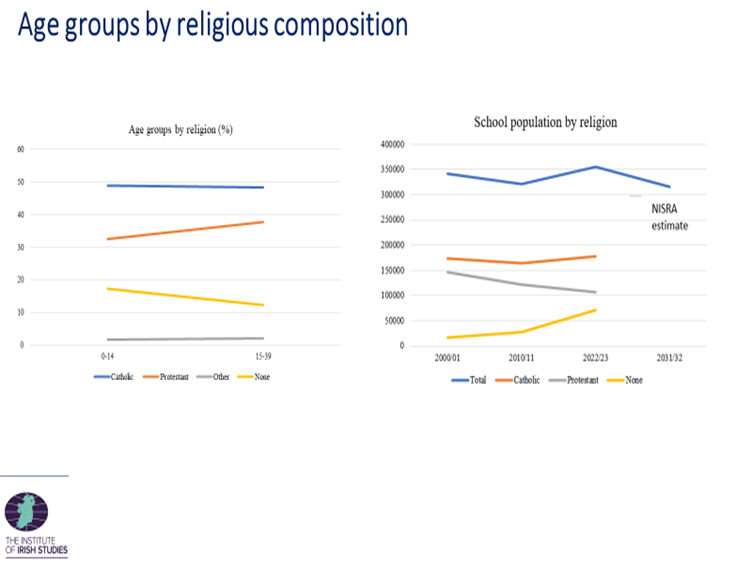
Figure 2. Age groups by religious composition
The too easy-to-read guide to unification works on a form of sectarian head-counting in which demographic change will lead to greater support for pro-unity parties. In the 1998 and 2022 Assembly elections Sinn Fein and SDLP share of the vote was the same, yet during that period around 200,000 joined the electorate of which around 16% of that rise equated to the numerical growth in pro-unity voters. If c. 50% of those who joined the register - following the head counting paradigm - were Catholics then 16% would read closer to 50%. Interestingly, the growth in the Alliance vote as a share of new voters was twice as high.
If we are caught in a stalemate, then we need a new vocabulary to explain the diversity and unfolding of new forms of identity that are not complex or difficult to understand. They merely reflect the decline in fealty to out-dated identity constructs. Increasingly, many who wish to remain in the union have no link to unionist identity or any sense of nationalism allied to their preference to remain in the UK. They are middle income, send their kids to subsidised grammar schools, coast along and holiday yearly in the sun. Constitutional change is viewed as problematic with many knowing the details around cost of living crises in Ireland, the scandals of housing shortages and FDI tax avoidance and that you pay for prescriptions. These are not East Germans dreaming of BMW ownership when a seven series already sits in the driveway. There may be benefits to unity in terms of economics but these are abstract and cannot be guaranteed. Nationalist over confidence forbids any debate regarding flaws in the socio-economic realities of Ireland is met with ‘have you had a look in your own backyard?’
Neither Irish or British nationalism has much to offer given a reliance upon the Orwellian form of two legs and four legs. It is replete with stereotyping, claims that constitutionalism is organic and a refusal to read shifts in identity and the varied reasons for constitutional preference.
If those who seek unity do not seek to understand those shifts, that being pro-union has multiple forms and that most seek interdependence and better inter-community relationships then the capacity to draw pro-union people to Ireland’s cause will remain remote. A starting point would be to realise that within pro-unionism the traditions of Orangeism, monarchism and the behaviours of sectarianism are minority concerns. These shifts away from traditional forms of unionism but remaining pro-union have been tracked by surveys and polls we have conducted since the late 1990s. We have found a small decline in Catholics who favour the union but among those who state they are Protestant or of no faith they have remained at the same level of support for the union. They have not shifted, in significant numbers to be being undecided or now pro-unity. Therefore, the fundamental vulnerability at present, for the pro-unity campaigners is the need to build a society in Ireland that is so economically advanced and socially inclusive that membership of it is beyond doubt. That may lead to the shifts in pro-union thinking. Accepting structural and societal weaknesses in the Republic would also help start a proper debate concerning futures.
As University of Liverpool Irish Institute surveys show, Northern Ireland is a much more nuanced place than some commentators assume. Neither form of rhetorical device employed by unionism or nationalism holds the sway that they once did which is why ignoring nuance is a dystopian tactic akin to 2+2 equals 5. We should start with the data and build up never assert data to ‘prove’ polemic.
Increasingly, sections of the electorate in Northern Ireland are coming to realise that the totem of the two nationalisms is merely power assertion based upon deception at the expense of progress, transition and reconciliation. Those who will eat grass to either gain unity or maintain the union must take great care with shifts in data and recognising changing facts. Without such recognition of change and the dynamics therein that are not linked to traditional forms of constitutionalism, the hollowness of these respective ideologies will remain and continue to deliver distortion and its corrupting effects.
Professor Peter Shirlow (FaCSS) is the Director at the University of Liverpool’s Institute of Irish Studies. He was formerly the Deputy Director of the Institute for Conflict Transformation and Social Justice, QUB. He is the Independent Chair of the Executive Office's Employers' Guidance on Recruiting People with Conflict-Related Convictions Working Group and a board member of the mental health charity Threshold. He is a Visiting Research Professor at the Senator George J. Mitchell Institute for Global Peace, Security and Justice. He sits on the editorial boards of Irish Political Studies and International Planning Studies. He is a member of the ARINS Advisory board.
Jennifer Todd, MRIA, cited in this article replies below:
Why does Professor Shirlow have to ‘short-hand caricature’ other views in order to present his own findings? This University of Liverpool, Irish Institute survey is interesting and valuable. I look forward to discussing it further at some stage soon.
It shows - as many have done before - that the Protestant and pro-union population is varied. This was one point of my ARINS article - that there is no one size policy or form of dialogue that fits all. That’s why it’s necessary to look at all the parts.
Shirlow’s selective quotations suggest - falsely - that I’m lumping all unionists together and saying none can be talked to. He can’t have been that ‘confused’. My article called for ‘a reflexive and dialogic approach’ and argued that ‘mutual respect and recognition does not come from protecting identities but rather it requires autonomous change in them’. His own interpretation of ‘the unionist community’ is interesting and deserves further discussion. I have a few questions. Is he really saying that there are no unionist hardliners? Or that they are really reasonable and it’s hardline even to talk about them?
Perhaps I am reading too much into the first couple of sentences. Is this good old school joshing and jostling? Far better we tease out what is happening within unionism.
Jennifer Todd
Professor Jennifer Todd MRIA, Geary Institute, UCD


